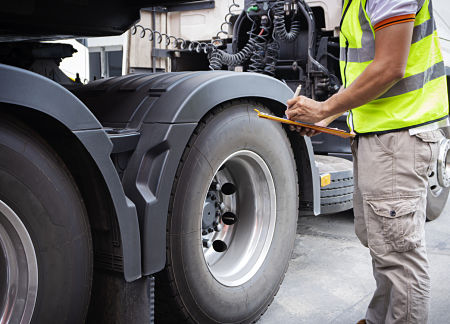U.S. Xpress Safe Trucking Report outlines safety recommendations
National trucking firm U.S. Xpress recently released its Safe Trucking Report, outlining a series of road safety measures the company endorses as well as industry best practices. The report includes results of a survey among more than 2,000 respondents.
“Shippers entrust us with a huge responsibility and want to work with safety-conscious carriers who view the relationship between the parties as a true partnership,” said Nathan Harwell, chief legal officer for U.S. Xpress. “Our customers are increasingly sophisticated and want a similarly sophisticated carrier partner.”
The U.S. Xpress report listed the following:
Insurance Minimums – U.S. Xpress has maintained insurance above the Department of Transportation-required minimums for years to assure its drivers and those sharing the road are protected. But in such a large and fragmented industry, thousands of small carriers are insuring at the bare minimum. 76% of adults agree or strongly agree the government should increase the minimum amount of liability insurance for trucking companies to $2 million.
Hair Testing – The gold standard for drug testing is using a hair sample to analyze prohibited substances metabolized in the body over a longer period and across a wider range of substances than urine tests. U.S. Xpress requires a negative hair test result for all drivers upon hire. 71% of adults agree or strongly agree trucking companies should use hair testing rather than the less-reliable urine test.
Event Recorders – U.S. Xpress installed these small video cameras fleet-wide in 2018, which begin recording when triggered by following too closely, a hard brake, speeding, roll stability, or lane departure. Footage can help determine accident causation and assist in the training of new drivers. 79% of adults agree or strongly agree trucking companies should be required to install video cameras on their trucks.
Speed Limiters – The company’s entire fleet is equipped with this technology, which manages the speed of tractors, helping to reduce accidents and improve fuel efficiency. 74% of adults agree or strongly agree trucking companies should be required to install speed limiters on their trucks.
Air Disc Brakes – U.S. Xpress was one of the first carriers in the nation to install air disc brakes on its tractors and trailers fleet-wide starting in 2016. A fully loaded, 80,000 tractor-trailer traveling 60 miles per hour can reduce stopping distance by approximately 20 feet when equipped with air disc brakes on all axels, rather than traditional drum brakes.
A key safety issue for trucks, as well as passenger vehicles, is distracted driving. The National Safety Council (NSC) says drivers do not take distraction seriously enough. More than 2,800 people in the U.S. died in distraction-related crashes in 2018 alone, according to the NSC.
The same year, 276,000 people were injured in distraction-related crashes. Drivers should be aware of the three major types of distractions while driving: manual, visual, and cognitive (mind).
Drivers often do not realize they are cognitively distracted. This happens when your eyes, hands, and mind are not focused on the task in front of you. In this case, it may cause injuries or even death. A recommendation from the NSC includes eliminating all forms of communication through the phone when driving, including talking on the phone through a speaker.
On a typical day, more than 700 people are injured in distracted driving crashes. This usually means talking on the cell phone, texting, or programming a vehicle. It diverts your attention away from being completely aware of your surroundings.
Fleet managers identified distracted driving, injury, safety, regulation comprehension, and hours of service compliance as their top five driver concerns, according to a recent study conducted by J. J. Keller Center for Market Insights.
J.J. Keller’s survey, fielded from Nov. 12 to Dec. 21, 2020, reveals that 2020 was a year of profound challenges for fleet professionals. They feel a significant burden on driver safety.
About 31 percent of fleet managers indicated they were most concerned that drivers were not avoiding distracted driving, and 27 percent indicated their drivers were not avoiding injury while working and driving.






